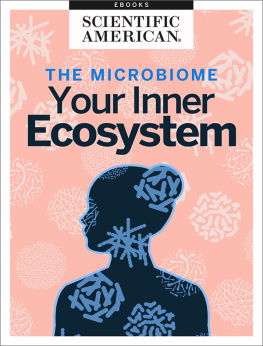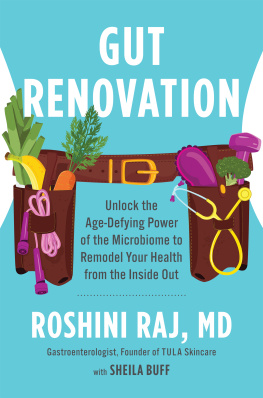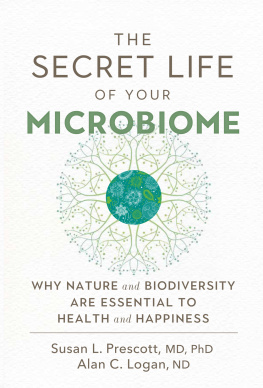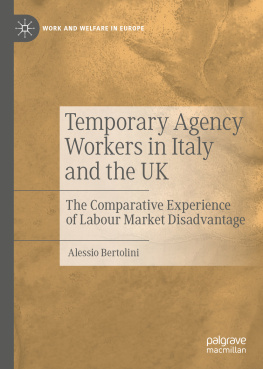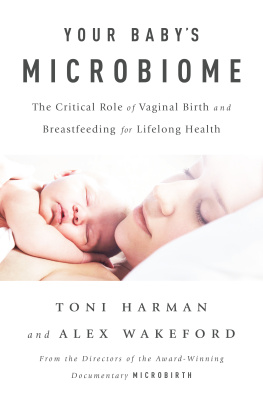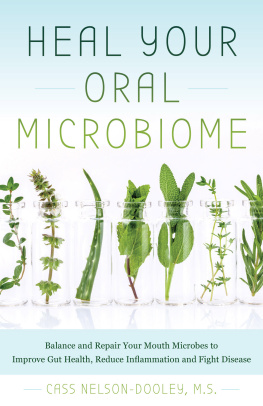Alessio Fasano - Gut Feelings: The Microbiome and Our Health
Here you can read online Alessio Fasano - Gut Feelings: The Microbiome and Our Health full text of the book (entire story) in english for free. Download pdf and epub, get meaning, cover and reviews about this ebook. year: 2021, publisher: MIT Press, genre: Romance novel. Description of the work, (preface) as well as reviews are available. Best literature library LitArk.com created for fans of good reading and offers a wide selection of genres:
Romance novel
Science fiction
Adventure
Detective
Science
History
Home and family
Prose
Art
Politics
Computer
Non-fiction
Religion
Business
Children
Humor
Choose a favorite category and find really read worthwhile books. Enjoy immersion in the world of imagination, feel the emotions of the characters or learn something new for yourself, make an fascinating discovery.

- Book:Gut Feelings: The Microbiome and Our Health
- Author:
- Publisher:MIT Press
- Genre:
- Year:2021
- Rating:5 / 5
- Favourites:Add to favourites
- Your mark:
- 100
- 1
- 2
- 3
- 4
- 5
Gut Feelings: The Microbiome and Our Health: summary, description and annotation
We offer to read an annotation, description, summary or preface (depends on what the author of the book "Gut Feelings: The Microbiome and Our Health" wrote himself). If you haven't found the necessary information about the book — write in the comments, we will try to find it.
Alessio Fasano: author's other books
Who wrote Gut Feelings: The Microbiome and Our Health? Find out the surname, the name of the author of the book and a list of all author's works by series.
Gut Feelings: The Microbiome and Our Health — read online for free the complete book (whole text) full work
Below is the text of the book, divided by pages. System saving the place of the last page read, allows you to conveniently read the book "Gut Feelings: The Microbiome and Our Health" online for free, without having to search again every time where you left off. Put a bookmark, and you can go to the page where you finished reading at any time.
Font size:
Interval:
Bookmark:
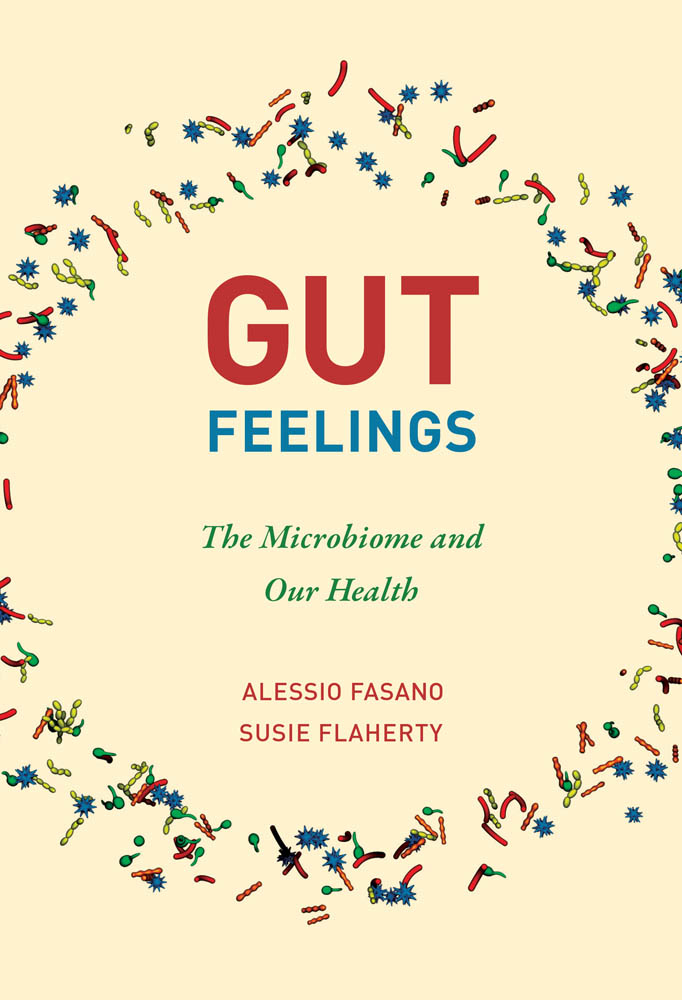
publication supported by a grant from
The Community Foundation for Greater New Haven
as part of the Urban Haven Project
Gut Feelings
The Microbiome and Our Health
Alessio Fasano and Susie Flaherty
The MIT Press
Cambridge, Massachusetts
London, England
2021 Massachusetts Institute of Technology
All rights reserved. No part of this book may be reproduced in any form by any electronic or mechanical means (including photocopying, recording, or information storage and retrieval) without permission in writing from the publisher.
Library of Congress Cataloging-in-Publication Data
Names: Fasano, Alessio, author. | Flaherty, Susie, author.
Title: Gut feelings : the microbiome and our health / Alessio Fasano and Susie Flaherty.
Description: Cambridge, Massachusetts : The MIT Press, [2021] | Includes bibliographical references and index.
Identifiers: LCCN 2020012663 | ISBN 9780262044271 (hardcover)
Subjects: LCSH: Gastrointestinal system--Microbiology.
Classification: LCC QR171.G29 F37 2021 | DDC 612.3/2--dc23
LC record available at https://lccn.loc.gov/2020012663
d_r0
List of Figures
Food pyramid based on the Mediterranean diet and lifestyle. Adapted from https://oldwayspt.org.
Prenatal, perinatal, and postnatal factors influence microbiome composition and function. Adapted from V. J. Martin, M. M. Leonard, L. Fiechtner, and A. Fasano, Transitioning from Descriptive to Mechanistic Understanding of the Microbiome: The Need for a Prospective Longitudinal Approach to Predicting Disease, Journal of Pediatrics 179 (December 1, 2016): 240248, https://doi.org/10.1016/j.jpeds.2016.08.049.
Factors and lifestyle during the first one thousand days of life (from conception to two years of age) influence microbiome engraftment and function toward adulthood and adult health outcomes.
Hierarchy of the classification of the bacterial domain.
Gut dysbiosis causes switching from controlled antigen trafficking to zonulin-dependent increased antigen trafficking that is secondary to changes in tight junctionrelated gene expression. These changes lead to T-cell activation, production of proinflammatory cytokines, and onset of -cell autoimmunity. Blocking the zonulin pathway will ameliorate inflammation by blocking antigen trafficking, with subsequent preservation of residual cells.
Diet affects the composition of the intestinal microflora. A hydrolyzed casein (gluten-free) diet reduces the number of Bacteroides species within the microflora, while the diabetogenic (gluten-containing) diet favors a high titer of Bacteroides [1]. Colonization of the gut with an imbalanced microflora in which the Bacteroides species is favored over other species, such as Bifidobacterium and Lactobacillus, activates the zonulin pathway [2]. In parallel, gliadin, a component of the grain protein gluten, binds to the chemokine receptor CXCR3 (expressed on intestinal epithelial cells) and induces MyD88-dependent activation of the zonulin pathway [3]. A hydrolyzed casein diet prevents activation of the CXCR3-zonulin pathway [4]. Activation of the zonulin pathway leads to increased zonulin release [5]. The released zonulin binds to zonulin receptors on the surface of the intestinal epithelium and causes disassembly of tight junctions by causing changes in tight-junction dynamics, including phosphorylation of occludin and ZO-1, changes in occludin-ZO-1 and ZO-1-myosin IB protein-protein interaction, and actin polymerization [6]. The disassembly of tight junctions leads to the impairment of the barrier function, leading to increased passage of luminal antigens into the lamina propria, where they are taken up and processed by mucosal antigen-presenting cells and presented to T cells [7]. The cascade of immune events eventually leads to autoimmune disease [8].
Effect of gut microbiota on neurofunctions. Signals from gut microbes are required for neuroinflammatory responses as well as hallmark gastrointestinal and -synuclein-dependent motor deficits in a model of Parkinsons disease. Adapted from T. R. Sampson, J. W. Debelius, T. Thron, S. Janssen, G. G. Shastri, Z. E. Ilhan, C. Challis, et al., Gut Microbiota Regulate Motor Deficits and Neuroinflammation in a Model of Parkinsons Disease, Cell 167, no. 6 (December 1, 2016): 14691480, https://doi.org/10.1016/j.cell.2016.11.018.
How the microbiome changes with age and environmental factors. Adapted from M. Levy, A. Kolodziejczyk, C. A. Thaiss, and E. Elinav, Dysbiosis and the Immune System, Nature Reviews Immunology 17, no. 4 (March 2017): 219232, https://doi.org/10.1038/nri.2017.7.
Key milestones in microbiome science from its inception in 1683 to future projections of its potential exploitation for personalized medicine and disease intervention. (Adapted from N. Pariente, Milestones in Human Microbiota Research, Milestones, June 18, 2019, https://www.nature.com/immersive/d42859-019-00041-z/index.html, accessed February 2, 2020.)
List of Tables
Protective immunological factors found in human milk mitigate characteristics of immature innate immunity
Chronic inflammatory diseases to which zonulin has been linked as a biomarker of gut permeability
Next-generation probiotics, their main therapeutic effects, and their main mechanism of action
To better appreciate the potential role of the human microbiome in health and disease, lets take a look at where weve been, where we are now, and where we are going on our journey into the microbial world. Not so long ago, we focused our studies on host-microbe interactions, convinced that microorganisms are exclusively responsible for infectious disease.
The germ theory of infectious disease suggesting that some diseases are caused by microorganisms was first formulated by Girolamo Fracastoro in 1546. His theory challenged the much more popular and almost universally accepted miasma theory from Galen (and Greek pollution) suggesting that endemic diseases such as cholera or the Black Death were due to a noxious form of bad air. The Black Death, a bubonic plague pandemic caused by the bacterium Yersinia pestis, killed between seventy-five million and two hundred million people throughout Eurasia and North Africa in the mid-fourteenth century.
The pioneering work of Francesco Redi, Agostino Bassi, Ignaz Semmelweis, and John Snow led to the seminal discoveries of Louis Pasteur and Robert Koch, which not only confirmed the germ theory but also established the new scientific fields of bacteriology and infectious diseases. Ever since, we have been engaged in warfare with microorganisms to eradicate them to efficiently treat infectious diseases. The concept has been (and in many minds still is) that microorganisms are indiscriminately nasty enemies that need to be defeated at all costs by developing and deploying weapons of mass destruction (antibiotics).
Now the entire field of disease pathogenesis and possible prevention has been revolutionized by the appreciation that the microbial ecosystem is instrumental in maintaining a state of health, and when disturbed, may instigate the onset of a series of diseases in genetically predisposed individuals. With the mapping of the human genome followed by the appreciation of the complexity of the human microbiome, we realize that we are immersed in an extremely rich environment of microorganisms.
Font size:
Interval:
Bookmark:
Similar books «Gut Feelings: The Microbiome and Our Health»
Look at similar books to Gut Feelings: The Microbiome and Our Health. We have selected literature similar in name and meaning in the hope of providing readers with more options to find new, interesting, not yet read works.
Discussion, reviews of the book Gut Feelings: The Microbiome and Our Health and just readers' own opinions. Leave your comments, write what you think about the work, its meaning or the main characters. Specify what exactly you liked and what you didn't like, and why you think so.

